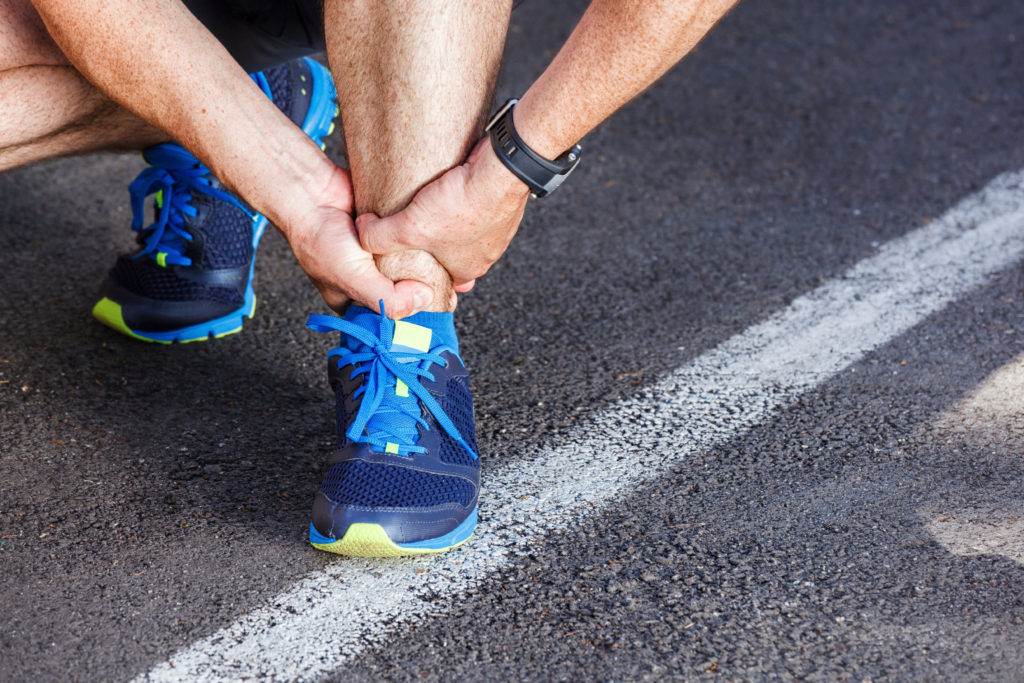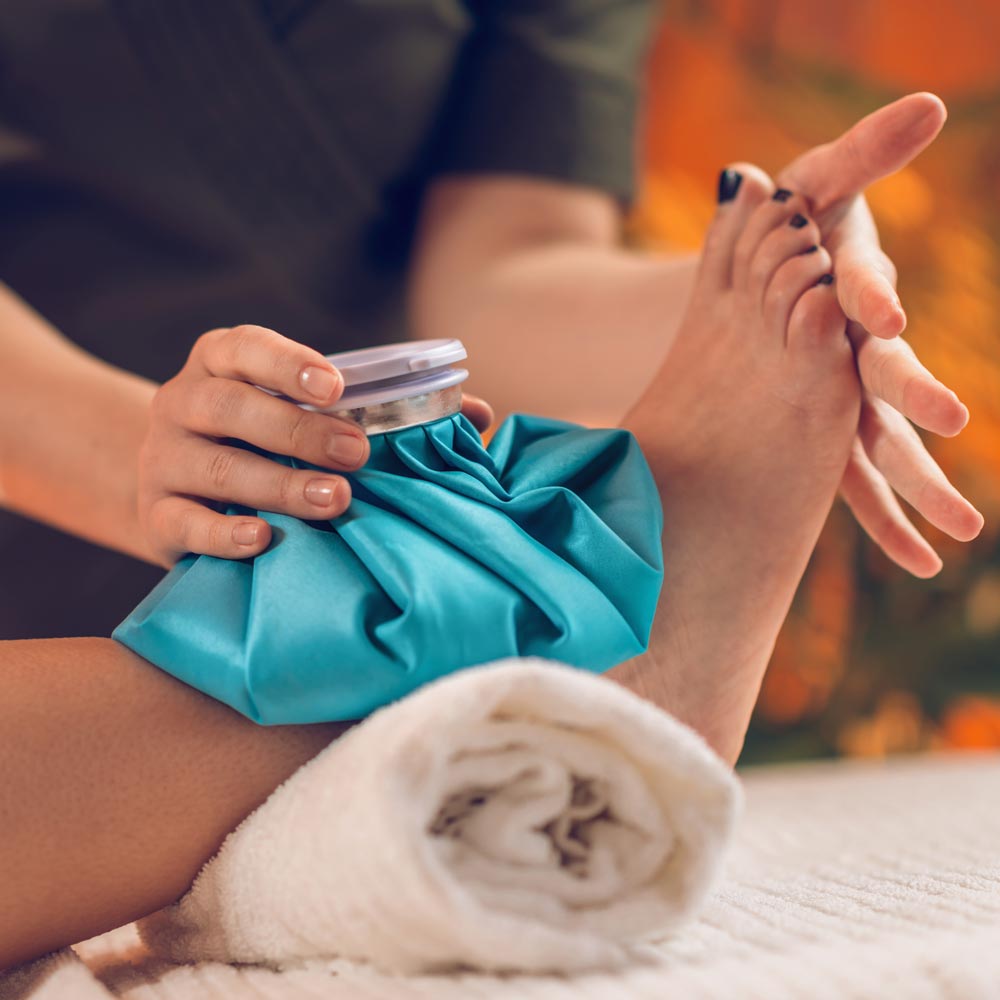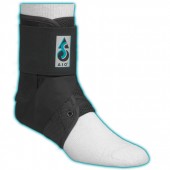Sprained ankle treatment can be complicated and is not to be taken lightly. Ankle sprains frequently result from ligament damage caused by overstretching or a full on tear. For example, ankles often roll out, an eversion injury, and damage ligaments on the lateral part of the ankle. Inward, or eversion, injuries do happen but are comparatively less common. Damage occurring to a ligament results in the need for ankle sprain recovery.
When the term sprain is used, it indicates damage happening to a ligament. Activities requiring a sudden change of direction, like netball, football or basketball frequently cause ankle sprains to occur.
In our experience, physiotherapy for ankle sprains often follows one particular example. This widespread way for ankle sprains to happen occurs when landing on the outside of the foot with toes pointing downward (plantarflexed), which is then followed by a slight turn in the foot (inversion). Body weight causes the ligaments on the outside of the foot to become overstretched.

The ligaments which lay on the lateral aspect of the ankle are the ATFL, the PTFL and the CFL. The anterior talo-fibular ligament, or ATFL, is by far the most common ligament to sustain damage, and, in severe cases, rupture. The calcaneofibular ligament (CFL), and the posterior talo-fibular ligament (PTFL) can also be implicated in more severe cases where multiple ligaments are damaged.

WHERE DO PEOPLE GO WRONG WITH SPRAINED ANKLE TREATMENT?
Immediately following an ankle injury, it is important to make an accurate diagnosis. It is important not to assume that “it will be alright” after a few days of rest. If an ankle sprain is suspected the patient should still be able to put weight through the foot following the injury (can be painful). If they are unable to walk or put any weight onto the ankle a fracture may be present.
Once it is determined that an ankle sprain has occurred it is important to protect the injured tissue initially and manage appropriately. 55% of individuals who experience an ankle sprain do not receive any medical attention, which can pose long term issues for effective ankle sprain recovery. What is even more alarming, is that 70% of individuals who have an ankle sprain report residual symptoms 6 weeks to 18 months after injury.
For one of the most common injuries that occurs, many people are living with long term complications that are avoidable through adequate medical management.
WHAT SHOULD YOU DO IMMEDIATELY AFTER AN ANKLE SPRAIN?
There is a large inflammatory process that occurs within the first 48 hours after the injury has occurred and the best approach is to use the RICE method. Not the food, but RICE. This simple method helps to decrease the effect of the inflammation leading to less long term complications at the injury site.
Once the inflammation (swelling and bruising) begins to settle it is very important to undergo effective sprained ankle treatment. Usually, there is a loss of both strength and range of motion at the ankle joint following an injury. People tend to work on these two important components quite well through stretching, massage and strengthening exercises.
One key component of rehabilitation that is often missed, but in many ways the most important, is regaining motor control at the ankle.
Physiotherapy for ankle sprains can include a focus on recouping motor control. This involves the regaining of muscle memory, muscular control and ultimately balance. Following an injury, the injured tissue can have a decreased perception of where it is in space, which means basically, the body is unsure of what position the ankle is in. On top of this, the muscles have reduced function and this is the primary cause of re-injury.

You add all this to the fact that repeated ankle sprains lead to a chronic hypermobility at the ankle and you have a very weak, mobile ankle susceptible to injury. Working on balance is a vital component to any rehabilitation program following an ankle sprain and a well-rounded rehabilitation program has been shown to decrease risk of re-injury.
In more severe cases a podiatry review to prevent future injury may include the prescription of orthotics and suitable footwear to provide the ankle with appropriate external support.
PHYSIOTHERAPY FOR ANKLE SPRAIN
ACUTE INFLAMMATORY PHASE – INITIAL 24-48HRS
PRIMARY GOAL: PROTECT THE INJURED TISSUE AND REDUCE THE INFLAMMATION.
- Compression taping (such as the box weave technique)
- Bracing or a moon boot
- Soft tissue massage to help reduce swelling in the joint (effleurage)
- Low grade joint mobilisations
- Non-weight bearing range of motion/circulation exercises
- Isometric strengthening exercises
- Advice and education on injury management, re: RICE
POST-ACUTE STAGE OF REHABILITATION
 PRIMARY GOAL: RESTORE RANGE OF MOTION IN THE JOINT AND BEGIN STRENGTHENING AROUND THE JOINT
PRIMARY GOAL: RESTORE RANGE OF MOTION IN THE JOINT AND BEGIN STRENGTHENING AROUND THE JOINT
- Soft tissue release through calf muscles, peroneals, TA
- Joint mobilisations (talocrural, subtalar)
- Concentric and Eccentric strengthening exercises
- Open and closed chain exercises
- Muscle lengthening stretches
- Self-massage/release with foam roller or massage ball
INTERMEDIATE STAGE OF SPRAINED ANKLE TREATMENT
PRIMARY GOAL: REGAIN FULL MUSCLE STRENGTH AND BEGIN NEUROMUSCULAR/BALANCE TRAINING. MAINTAIN/ENSURE FULL RANGE OF MOTION IS PRESENT IN ANKLE
- As above
- Increase resistance/load to progress strengthening exercises
- Static balance exercises – feet together, tandem stance, single leg, eyes open, eyes closed, firm surface, uneven surfaces
GRADUAL RETURN TO SPORT
 PRIMARY GOAL: RETURN TO FULL FUNCTION (ADEQUATE STRENGTH, RANGE AND BALANCE COMPARABLE TO NON-AFFECTED SIDE)
PRIMARY GOAL: RETURN TO FULL FUNCTION (ADEQUATE STRENGTH, RANGE AND BALANCE COMPARABLE TO NON-AFFECTED SIDE)
- As above
- Begin dynamic balance exercises – running drills, change of direction, hopping, moving from different surfaces
- Gradually progress to sports specific activities in controlled environments
PRE-REQUISITE TO RETURN TO SPORT:
- Full pain free range of motion.
- Full strength.
- Appropriate neuromuscular control.
- Example of a Functional Test: Hop of 30cm box – need to be able to land one leg without any complications
- Knowing how to ankle tape or purchase of an ankle brace.
Ankle sprain recovery is very important as the ankle can lose strength and its ability to stabilise itself. A strengthening or rehabilitation program is likely required. Orthotics and appropriate footwear may be needed to assist in keeping the ankle stable and prevent further injury. Read Pivotal Motion’s blog on do you ever fully recover from the ankle sprain?

